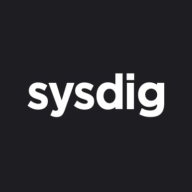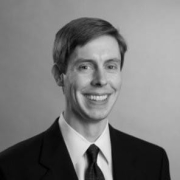


Sysdig Secure and Microsoft Defender for Cloud both compete in the cloud security category. Microsoft Defender for Cloud is often seen as superior due to its extensive features and integration capabilities, making it an investment worth considering.
Features: Sysdig Secure provides threat detection, compliance monitoring, and real-time visibility in containerized environments. Microsoft Defender for Cloud offers security management, detailed threat intelligence, and advanced threat protection, benefiting from integrations with other Microsoft services.
Room for Improvement: Sysdig Secure could improve by reducing infrastructure requirements and further simplifying the setup process. Additional documentation might enhance user experience. For Microsoft Defender for Cloud, streamlining initial configurations and making integrations with non-Microsoft products easier would be beneficial. Enhancing user interface simplicity could also be an area to address.
Ease of Deployment and Customer Service: Sysdig Secure has a straightforward setup but can face challenges due to specific infrastructure needs, supported by responsive customer service. Microsoft Defender for Cloud benefits from Microsoft Azure integration, which streamlines deployment, backed by extensive documentation and support, contributing to a smoother overall process.
Pricing and ROI: Sysdig Secure is competitively priced, offering good ROI with its monitoring and security features. Microsoft Defender for Cloud may involve a higher initial cost but offers greater ROI over time through its integrations with other Microsoft products, which enhance its value significantly.



SentinelOne Singularity Cloud Security protects cloud workloads, offering advanced threat detection and automated response. It integrates seamlessly with cloud environments and secures containerized applications and virtual machines against vulnerabilities.
SentinelOne Singularity Cloud Security is renowned for its efficiency in mitigating threats in real-time. The platform integrates effortlessly with existing cloud environments, ensuring robust cloud security management with minimal manual intervention. Securing containerized applications and virtual machines, it excels in threat intelligence and endpoint protection. However, improvements are needed in performance during high workload periods, and more integrations with third-party tools and better documentation would be beneficial. Users often find the installation process complex, support response times slow, and the dashboard's navigation unintuitive.
What are the key features of SentinelOne Singularity Cloud Security?In specific industries, SentinelOne Singularity Cloud Security is implemented to safeguard critical data and infrastructure. Organizations in finance, healthcare, and technology depend on its real-time threat detection and automated response to protect sensitive information. Its ability to secure containerized applications and virtual machines is particularly valuable in dynamic environments where rapid scaling is necessary.
Microsoft Defender for Cloud is a comprehensive security solution that provides advanced threat protection for cloud workloads. It offers real-time visibility into the security posture of cloud environments, enabling organizations to quickly identify and respond to potential threats. With its advanced machine learning capabilities, Microsoft Defender for Cloud can detect and block sophisticated attacks, including zero-day exploits and fileless malware.
The solution also provides automated remediation capabilities, allowing security teams to quickly and easily respond to security incidents. With Microsoft Defender for Cloud, organizations can ensure the security and compliance of their cloud workloads, while reducing the burden on their security teams.
In the cloud, every second counts. Attacks move at warp speed, and security teams must protect the business without slowing it down. Sysdig stops cloud attacks in real time, instantly detecting changes in risk with runtime insights, a unique AI architecture, and open source Falco. Sysdig delivers live visibility by correlating signals across cloud workloads, identities, and services to uncover hidden attack paths. By knowing what is running, teams can prioritize the vulnerabilities, misconfigurations, permissions, and threats that matter most. From prevention to defense, Sysdig helps enterprises move faster and focus on what matters: innovation.
Sysdig. Secure Every Second.
We monitor all Cloud-Native Application Protection Platforms (CNAPP) reviews to prevent fraudulent reviews and keep review quality high. We do not post reviews by company employees or direct competitors. We validate each review for authenticity via cross-reference with LinkedIn, and personal follow-up with the reviewer when necessary.